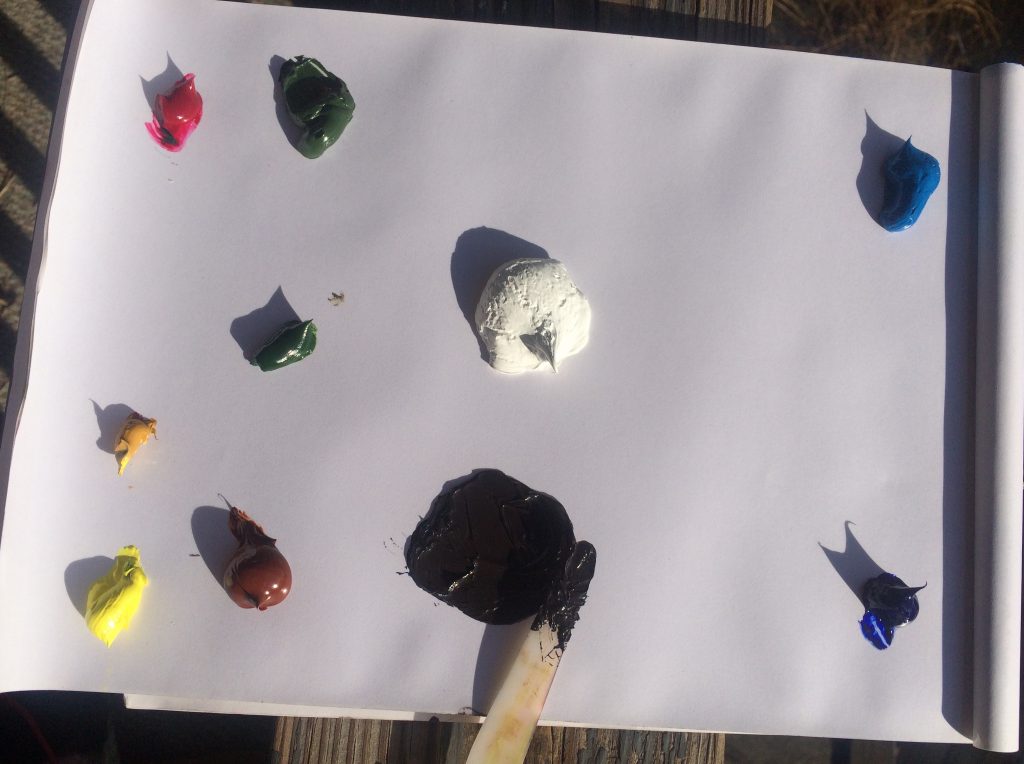Mix your own black what? Mix your own black paint.

You can buy black paint from a store. It will be just about the purest possible black, the exact color of “black as the pit”. But here’s why you shouldn’t do that.
First of all, what black you use is important. You’ll use it as a base for all your darkest colors. Since without dark tones, light ones don’t stand out, what color you use to mix those shadows is going to be one of the most important parts of your painting.
A lot of artists like to talk about the “soul” in a piece of art. That seems confusing, but here’s what it means. Each person sees the world differently, so what you choose to paint (in terms of both the subject you paint and what colors you use to paint it) depends on how you see the world. How exactly you choose to make your black depends on how you see the world, too. So, if you mix your own black, it will fit in better with the rest of your painting. They both have your “soul”.
One of the apparent downsides to mixing your own black is that it will never be consistent. But this is actually an upside in disguise. For example, for this painting, the black I made was tinted purple. However, the black on my palette above (which is for a different painting) is tinted brown. A purple-black suited the former painting more, where a brown-black suits the latter. If I’d used store-bought black, I wouldn’t have gotten to make the decisions which led to blacks suited to their respective paintings: they would all be banal and generic.
Could I have mixed one single color into store-bought black to attain a tint? Yes. But in that case, I as the artist would only have chosen one color; the paint company chose the rest of the colors to make the black for me. For me to have the most control over my own painting, I choose instead to mix my black.
So basically, you should mix your own black because then, it fits with your painting better. You made them both, and not only that, you made the black to suit the painting.
There’s one more reason to mix your own black: you get better greys. When you use store-bought black, your grey turns out as a very lifeless, generic, neutral grey. But the problem is that most greys are not generic neutral: they’re tinted with something. The tablecloth on my dining table is a light grey tinted with yellow. The paper of my Oxford Classical Dictionary is a light grey tinted with orange. The surface of my electric keyboard is a mid grey tinted with blue. If I were painting these things, I would want my greys to reflect all these differences, which is why I would mix my own. Store-bought black will not give you interesting greys.
Now that you know why you should mix black, let me briefly tell you how.
To mix black, just take your darkest colors and mix them in different proportions, depending on what you want your resulting black to look like. When I mixed my purple-black, I took ultramarine blue and crimson in equal parts, then mixed in a bit of dark green and burnt sienna. By contrast, when I mixed my brown-black (above), I replaced the crimson with burnt sienna and vice versa, and added proportionately a lot more of the dark green. Same colors (I only own nine total), but the different proportions produced a different result.
That’s all there is to it! Now, go forth and mix yourself some black.